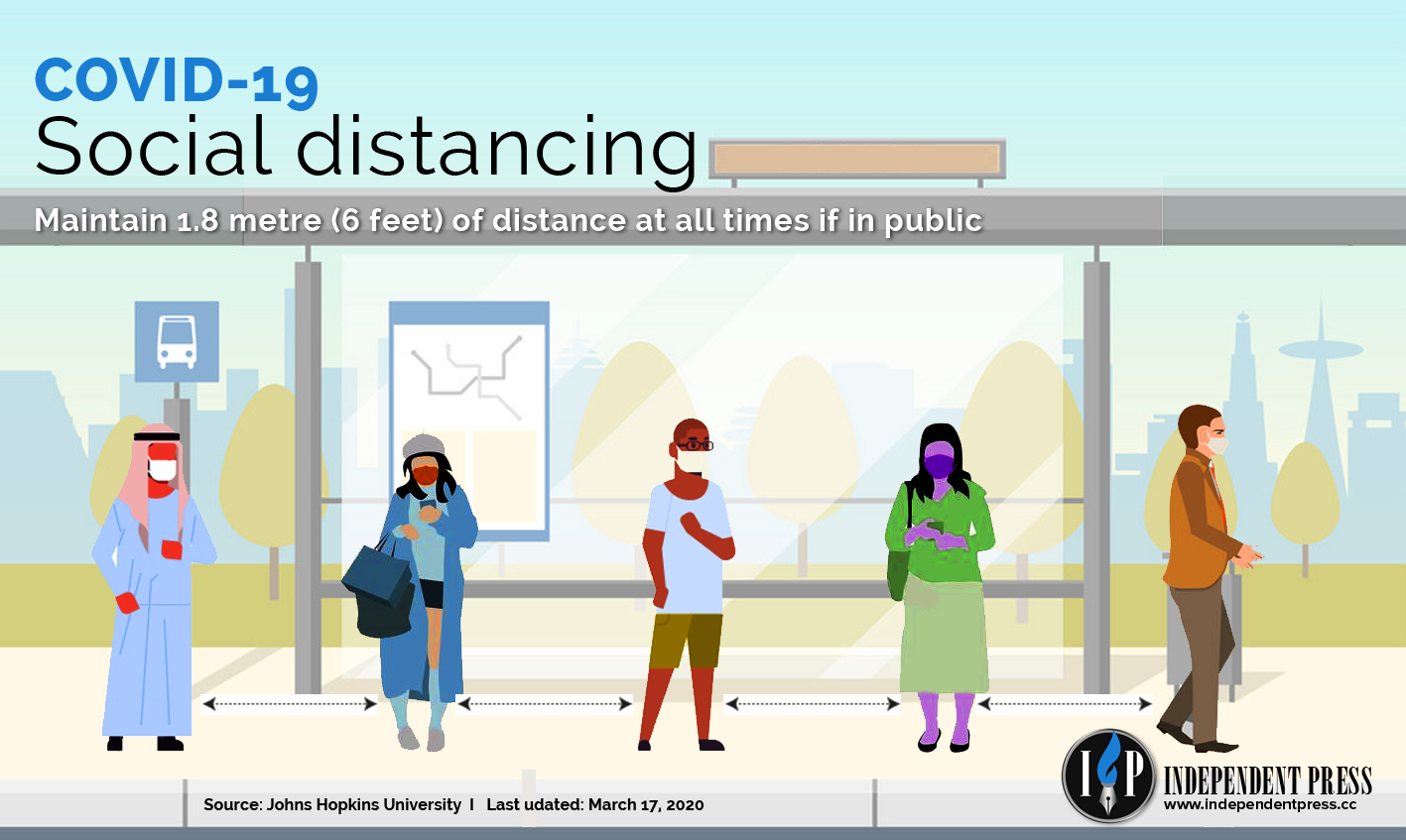Wed 18 March 2020:
The WHO urges countries to test more people to curb the pandemic, but India has not expanded testing so far.
Indian authorities have said they will not expand coronavirus testing, as most affected nations are doing, despite criticism that limited testing could leave COVID-19 cases undetected in the world’s second-most populous country.
The World Health Organization (WHO) has urged countries to test as widely as possible to curb the pandemic, but India has only been testing those who have travelled from affected countries or come in contact with a confirmed case and shown symptoms after two weeks of quarantine.
On Tuesday, it added healthcare workers with symptoms who are treating patients with severe respiratory illnesses.
India is conducting only about 90 tests per day, despite having the capacity for as many as 8,000. So far, 11,500 people have been tested, according to the Associated Press.
Officials have said the WHO guidance didn’t apply in India because the spread of the disease has been less severe than elsewhere.
Balaram Bharghava, who heads the Indian Council of Medical Research (ICMR), the country’s top medical research body, said the guidance was “premature” for India, where community transmission has not yet been detected.
“Therefore it creates more fear, more paranoia and more hype,” he said.
Last week, a British citizen who approached a public hospital in New Delhi for coronavirus test was told she was not eligible under India’s testing criteria and turned away.
The woman, who requested anonymity fearing business consequences for her employer, said she told hospital officials that she may have had contact with an infected person in her hospitality sector job, but could not be sure.
After trying and failing to be tested a second time, she left India this week for France, where her family lives and where President Emmanuel Macron had announced extreme measures to curb the coronavirus.
Indian authorities have justified their restrictions as a way to keep a deluge of people from demanding tests that would cost the government money it needs to combat other diseases such as tuberculosis, malnutrition and HIV/AIDs.
ICMR said there was no need to expand such testing. However, authorities said they’re preparing for community spread by bolstering their lab testing infrastructure. India has 52 coronavirus testing centres.
As a result of the narrow testing criteria, sick people with potential exposure to the coronavirus are being sent home, and some experts fear that India’s caseload could be much higher than government statistics indicate.
Bharghava, the ICMR chief, said virus infections in India can still be traced back to people who travelled into the country from affected locales and that testing protocols would be revised if community transmission is detected.
Coronavirus cases in India rose to 147 on Wednesday, a day after a third person, a 64-year-old man, died in the western state of Maharashtra.
The South Asian nation has closed most schools and entertainment facilities, including cinemas.
Authorities say most of the infections have been “imported” – linked to foreign travel or direct contact with someone who caught the disease abroad.
India has suspended all incoming tourists and will bar non-Indian passengers on flights from the European Union, the European Free Trade Association, Turkey and the United Kingdom from Wednesday.
Travellers coming from or transiting through the United Arab Emirates, Qatar, Oman and Kuwait are required to undergo a 14-day quarantine when they arrive in India, the government announced on Monday.
Arrivals from China, Italy, Iran, South Korea, France, Spain and Germany are already subject to similar restrictions, while most border points with neighbouring Bangladesh and Myanmar have been shut.
But concerns of undetected communal spread are growing.
“Given the pattern of disease in other places, and given our low level of testing, then I do think that community transmission is happening, ” said Dr Gagandeep Kang, director of the Translational Health Science and Technology Institute.
WHO said that, while self-initiated isolation by people with mild symptoms remains the most important community intervention, testing of all suspected cases, symptomatic contacts of probable and confirmed cases, would still be needed.
“We need to be geared to respond to the evolving situation with the aim to stop transmission of COVID-19 at the earliest to minimise the impact. … We need to act now,” said Dr Poonam Khetrapal Singh, the WHO’s director for the region.
More than 400 million of India’s 1.3 billion people live in crowded cities, many without regular access to clean water, conditions that could allow the disease to spread rapidly.
“Community spread is very likely. But the only way to know for sure is through more expansive testing,” said Dr Anant Bhan, a global health researcher in Bhopal, India.
The virus causes only mild or moderate symptoms, such as fever and cough, for most people, but severe illness is more likely in the elderly and people with existing health problems.
India has a lower proportion of elderly than other countries, but its healthcare facilities are limited and already struggle to accommodate the large number of patients with other diseases.
“This, along with our high population density, can be our great challenge,” public health researcher Oommen Kurian told the Associated Press.
India has been reluctant to expand testing, not wanting to trigger panic and overwhelm hospitals, but also because of the cost: While the tests are free for patients, they cost the government about 5,000 rupees ($67) each.
In an already stretched and underfunded public healthcare system, money spent on the coronavirus leaves less for other public health problems. India spends only 3.7 percent of its total budget on health.
The coronavirus may also be spreading in India because health officials have struggled to maintain quarantines, with people fleeing from isolation wards, complaining of filthy conditions.
In Maharashtra, five people, one of whom had tested negative and the rest who were awaiting test results, walked out of an isolation ward last Saturday.
India has implemented a 19th-century epidemic law that empowers public officials to enforce more rigorous containment measures and impose penalties and punishments for escapes.
Lav Agarwal, a health ministry official, said authorities “often don’t get enough support from people”.
Similarly, in neighbouring Sri Lanka, the government has ordered about 170 passengers who evaded airport screening after returning from several affected countries to report to police or face financial penalties and possible imprisonment.
Aditya Bhatnagar, an Indian university student who was studying in Spain, described unsanitary conditions at an isolation ward where he and 50 others passengers on a flight from Barcelona have been kept since landing in New Delhi on Monday.
Bhatnagar said the rooms, each holding about eight people, lacked basic hygiene features such as clean bedsheets and bathrooms. He told the Associated Press that the group, awaiting their COVID-19 test results, was not provided with masks or sanitiser.
“I don’t think these measures would be enough to contain the pandemic,” Bhatnagar, the ICMR chief, said, adding that some passengers had opted to move from the wards and into private hotels, paying 4,000 rupees ($55) a night to self-isolate for at least 14 days.
SOURCE: AL JAZEERA AND NEWS AGENCIES
Think your friends would be interested? Share this story!








